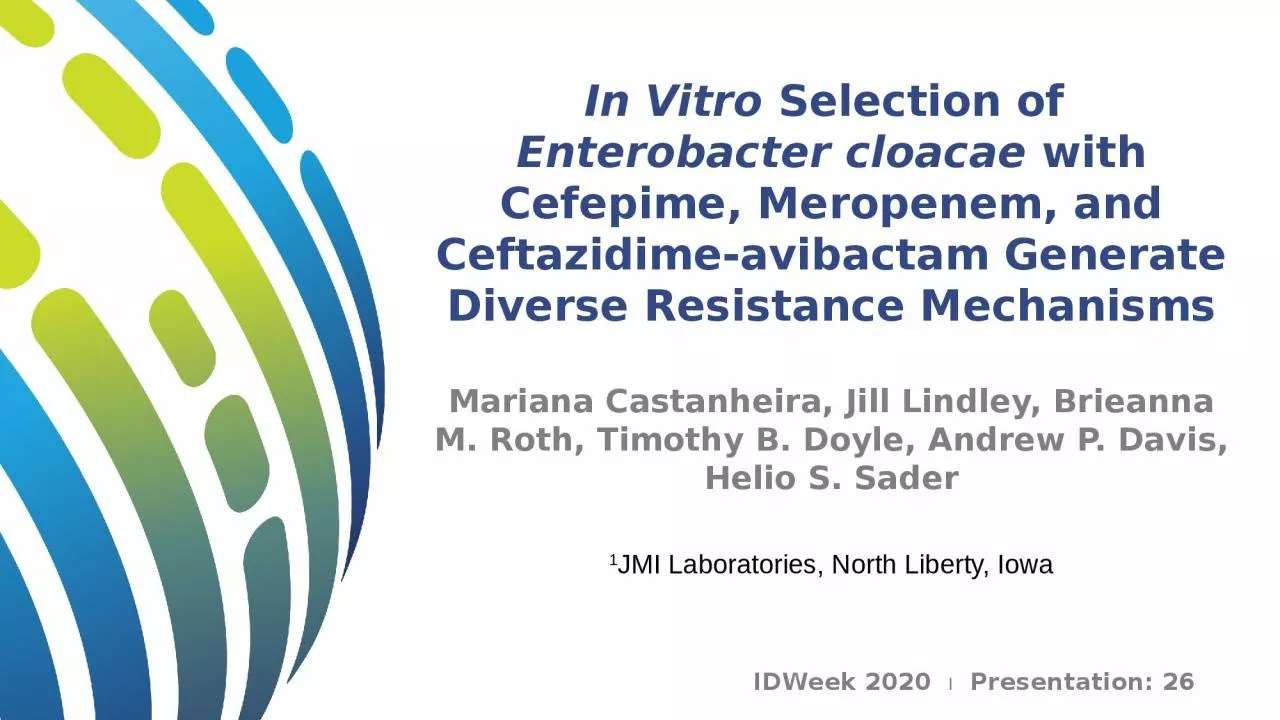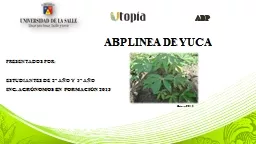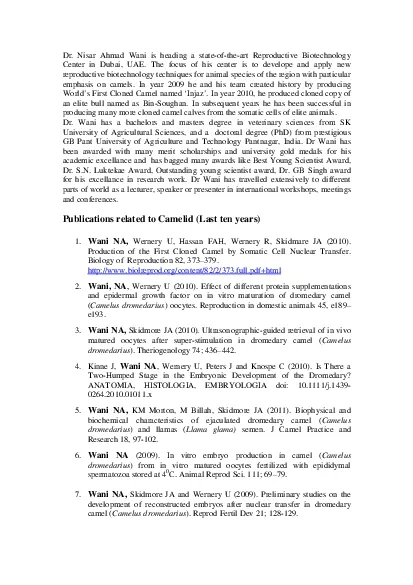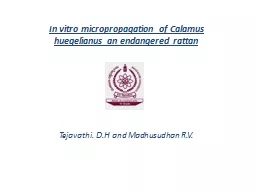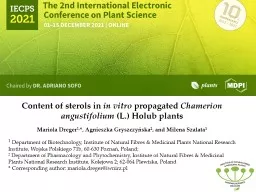PPT-In Vitro Selection of Enterobacter cloacae
Author : roy | Published Date : 2023-09-22
with Cefepime Meropenem and Ceftazidimeavibactam Generate Diverse Resistance Mechanisms Mariana Castanheira Jill Lindley Brieanna M Roth Timothy B Doyle Andrew
Presentation Embed Code
Download Presentation
Download Presentation The PPT/PDF document "In Vitro Selection of Enterobacter clo..." is the property of its rightful owner. Permission is granted to download and print the materials on this website for personal, non-commercial use only, and to display it on your personal computer provided you do not modify the materials and that you retain all copyright notices contained in the materials. By downloading content from our website, you accept the terms of this agreement.
In Vitro Selection of Enterobacter cloacae: Transcript
Download Rules Of Document
"In Vitro Selection of Enterobacter cloacae"The content belongs to its owner. You may download and print it for personal use, without modification, and keep all copyright notices. By downloading, you agree to these terms.
Related Documents

